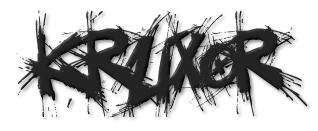top
Quick Summary for top
top CSS property participates in specifying the vertical position of a positioned element. It has no effect on non-positioned elements.
Code Usage for top
/* <length> values */ top: 3px; top: 2.4em; /* <percentage>s of the height of the containing block */ top: 10%; /* Keyword value */ top: auto; /* Global values */ top: inherit; top: initial; top: revert; top: unset; More Details for top
top
The top CSS property participates in specifying the vertical position of a positioned element. It has no effect on non-positioned elements.
The effect of top depends on how the element is positioned (i.e., the value of the position property):
position is set to absolute or fixed, the top property specifies the distance between the element's outer margin of top edge and the inner border of the top edge of its containing block. When position is set to relative, the top property specifies the distance the element's top edge is moved below its normal position. When position is set to sticky, the top property is used to compute the sticky-constraint rectangle. When position is set to static, the top property has no effect. When both top and bottom are specified, position is set to absolute or fixed, and height is unspecified (either auto or 100%) both the top and bottom distances are respected. In all other situations, if height is constrained in any way or position is set to relative, the top property takes precedence and the bottom property is ignored.
Syntax
/* <length> values */ top: 3px; top: 2.4em; /* <percentage>s of the height of the containing block */ top: 10%; /* Keyword value */ top: auto; /* Global values */ top: inherit; top: initial; top: revert; top: unset; Values
<length> A negative, null, or positive <length> that represents:
<percentage> A <percentage> of the containing block's height.
auto Specifies that:
for absolutely positioned elements, the position of the element is based on thebottom property, while height: auto is treated as a height based on the content; or if bottom is also auto, the element is positioned where it should vertically be positioned if it were a static element. for relatively positioned elements, the distance of the element from its normal position is based on the bottom property; or if bottom is also auto, the element is not moved vertically at all. inherit Specifies that the value is the same as the computed value from its parent element (which might not be its containing block). This computed value is then handled as if it were a <length>, <percentage>, or the auto keyword.
Formal definition
| Initial value | auto |
|---|---|
| Applies to | positioned elements |
| Inherited | no |
| Percentages | refer to the height of the containing block |
| Computed value | if specified as a length, the corresponding absolute length; if specified as a percentage, the specified value; otherwise, auto |
| Animation type | a length, percentage or calc(); |
Formal syntax
<length> | <percentage> | auto
Examples
A positioned element set 10% from the top
body { background: beige; } div { position: absolute; top: 10%; right: 40%; bottom: 20%; left: 15%; background: gold; border: 1px solid blue; } <div>The size of this content is determined by the position of its edges.</div> Specifications
| Specification |
|---|
| CSS Positioned Layout Module Level 3 # insets |
See also
inset, the shorthand for all related properties: top, bottom, left, and right The mapped logical properties: inset-block-start, inset-block-end, inset-inline-start, and inset-inline-end and the shorthands inset-block and inset-inline position Select your preferred language English (US)DeutschEspañolFrançais日本語Русский中文 (简体) Change language

